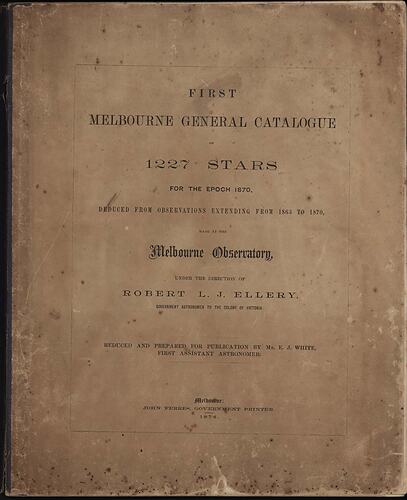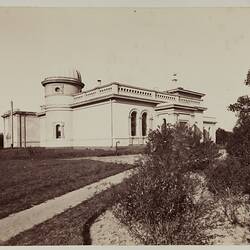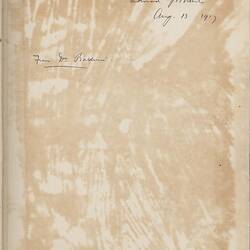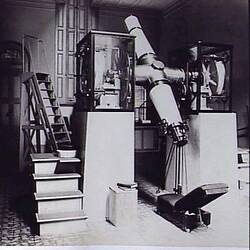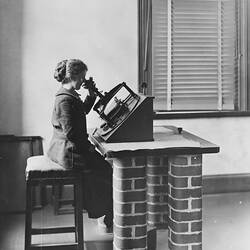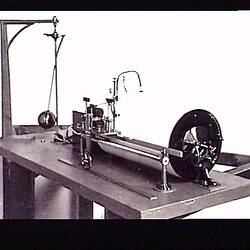The task of mapping the southern skies was huge, and the astronomers at the observatories of Melbourne, Sydney and Adelaide all spent a considerable amount of their time doing positional astronomy and star mapping well into the 20th century.
In 1864 Melbourne Observatory joined a collaborative project with the observatories at Madras and Cape of Good Hope to map the stars of the Southern Hemisphere. Melbourne's task was to measure the right ascension and declination of every star from the 1st to the 10th magnitude of brightness, between the celestial parallels of 60 and 80 degrees south declination. Using a new transit instrument erected in the Second Transit Room, the assistant astronomer E. J. White and second assistant astronomer C. Moerlin began a huge series of observations. By 1871 they had observed the positions of nearly 50,000 stars.
There was no doubt that the work of the Melbourne Observatory was of a very high standard. When Ellery visited Britain for 12 months in 1875, the Astronomer Royal George Airy praised Ellery's work, stating publicly that the Melbourne Observatory had published the best catalogue of the stars of the southern hemisphere.
More Information
-
Keywords
-
Authors
-
Article types
